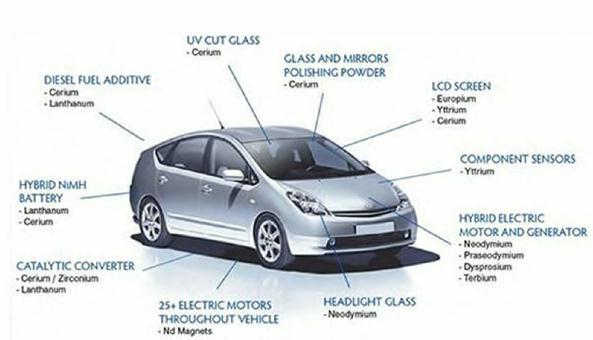High-Tech can?t last: there are limited essential elements
Companies, agencies, institutions, etc
NIPP)Alice Friedemann
Trucks Stop Running: Energy
the Future of Transportation
Whole Grain Artisan Chips
iPhones
Apple
CRT
Motherboard
NMA
Chromium
Cobalt
Copper, Europium
Gallium, Germanium
Mercury
Platinum, Refined Gallium
Ruthenium
Tin, Titanium, Vanadium
USASource
Arsenic, Asbestos, Bauxite
Rubidium
YttriumPercent
Platinum 90% Germanium 88% Iodine
Diamond
Rhenium
Nitrogen
the Yale School of Forestry & Environmental Studies
the Colorado School of Mines
DoE
Ames Laboratory
the US DoE
Apollo
Dell
the US DoE’s
Neodymium
Critical Materials Strategy
the US Department of Energy
Samarium
The US DoE
for?British Geological Survey
World Mineral Production 2005
K. Technology and Organizational Factors
the Notebook Industry Supply Chain
Institute for Supply Management 2006.Crow
The Wall Street Journal
Nature
Oxford University Press
The Prometheus Institute
The National Infrastructure Protection Plan
Department of Homeland Security
National Mining Association
University of Cambridge
Plan to End Mining
PCMag.comUS Department of Energy
American Physical Society and Materials Research Society
Energy Critical
Mineral Commodity Summaries
Honda
AC
WTSHTF
poorThank
Jetsons
ORWG
ORWGs
The Right Ammunition
dividends= 0%
People
Peak Prosperity
Tantalum
Alulmina
Mica
Garnet
Thomas Graedel
Law
rare?By
Murray Hitzman
Karl Gschneidner
Alex King
Yttrium
Stranglehold
Z., Dedrick
Kraemer
James Mitchell
New ScientistDean
J. 2005
Ruffle
Williams
Eric D.
Ayres
Robert U.
Heller
Miriam
Elon Musk
Comment Name * Email * Website
Groups
Canadian
Asian
Physical locations
Silicon
Africa
Earth
Europe
Asia
Places
The Laptop Trail
Building Block
Locations
China
KunstlerCast278
Manganese
Nickel
Selenium
Terbium
Yttrium
ZincArgentina
Australia
Belgium
Brazil
Canada
Chile
Columbia
Democratic Republic Congo
Egypt
Ethiopia
France
Israel
Japan
Kazahkstan
Malaysia
Mexico
Namibia
Nigeria
Norway
Peru
Russia
Saudi Arabia
South Africa
Sudan
Ukraine
Bonanni
Afghanistan
Liebig
US
Mountain Pass
California
USA
America
bit.ly/eLFwuo
Events
No matching tags

Summary
This long post describes the rare metals and minerals phones, laptops, cars, microchips, and other essential high-tech products civilization depends on.Metals and minerals aren’t just physically limited, they can be economically limited by a financial collapse, which dries up credit and the ability to borrow for new projects to mine and crush ores. Once oil begins to decline, so too will mining and all other manufacturing steps, which all depend on fossil energy.The next war over resources is likely to be done via cyber-attacks that take down an opponent’s electric grid, which would affect nearly all of the other essential infrastructure such as agriculture; defense; energy; healthcare, banking, finance; drinking water and water treatment systems; commercial facilities; dams; emergency services; nuclear reactors, information technology; communications; postal and shipping; transportation and systems; government facilities; and critical manufacturing (NIPP)Alice Friedemann www.energyskeptic.com author of “When Trucks Stop Running: Energy and the Future of Transportation”, 2015, Springer and “Crunch! The minerals mentioned in this article were tungsten, tantalum, copper, tin, gold, silver, palladium, aluminum, cobalt, neodymium, gallium, all of which produce toxic byproducts during their mining and the refining of metals.And less than one percent of these metals are recycled, due to the how difficult it is to collect enough electronic devices to make recycling worthwhile and getting the extremely minute quantities of metals out of them.Each element was extracted from ores using hands, shovels and hammers, heavy machinery, and explosives, then smelted and refined into metals before being molded, cut, screwed, glued, and soldered into products that are stuffed into packages and shipped worldwide for sale. For Apple, this may be a feature rather than a bug: Documents obtained by Motherboard in 2017 revealed that the company requires its recycling partners to shred iPhones and MacBooks so that their components cannot be reused, further reducing the value recyclers can get out.These are nearly as essential as fossil fuels to maintaining civilization, yet depend on 60 minerals & metals, chemicals, high-tech machines, etc., making them more vulnerable than any other product to supply chain and cascading failures.While just 12 minerals were used to fabricate microchips initially, now over 60 different kinds of minerals are required (NMA 2017):Aluminum, Antimony, Arsenic, Barium, Beryllium, Bismuth, Boron, Bromine, Cadmium, Chromium, Cobalt, Copper, Europium, Ferrite, Gallium, Germanium, Gold, Indium, Lead, Lithium, Magnesium, Manganese, Mercury, Nickel, Niobium, Palladium, Petroleum, Phosphorus, Platinum, Refined Gallium, Rhodium, Ruthenium, Selenium, Silicon, Silver, Stainless steel, Steel, Tantalum, Terbium, Tin, Titanium, Vanadium, Yttrium, ZincArgentina, Australia, Belgium, Brazil, Canada, Chile, China, Columbia, Democratic Republic Congo, Egypt, Ethiopia, France, Israel, Japan, Kazahkstan, Malaysia, Mexico, Namibia, Nigeria, Norway, Peru, Russia, Saudi Arabia, South Africa, Sudan, Ukraine, USASource: laptop supply chain assembly process documented in Bonanni et al (2010):We’re dependent on China for 100% of these metals and minerals: Arsenic, Asbestos, Bauxite, Alulmina, Cesium, Fluorspar, Gallium, Graphite (natural), Indium, Manganese, Mica (sheet, natural), Niobium (columbium), Quartz crystal (industrial), Rubidium, Strontium, Tantalum, Thallium, Thorium, Vanadium, YttriumPercent dependency on imports for these minerals: 99% gemstone 96% Vanadium 92% Bismuth 91% Platinum 90% Germanium 88% Iodine 85% Diamond (natural industrial stone) 87% Antimony 86% Rhenium 83% Barite 77% Titanium mineral concentrates 81% potash (essential fr agriculture) 78% cobalt 78% Rhenium 75% Tin 73% Silicon carbide (crude) 72% Zinc 70% Chromium 65% Garnet (industrial) 64% Titanium (sponge) 62% Peat 57% Silver 54% Palladium 49% Nickel 46% magnesium compounds 42% Tungsten 36% silicon 35% copper 35% Nitrogen (fixed, Ammonia: essential for industrial agriculture)Rare earth elements (and platinum group metals) are essential for high-tech technology: i.e. hybrid cars, computers, cell phones, television — anything with a microchip, even toasters. They are finite, mostly controlled by China (up to 97% by some estimates), the last resources are mainly in war-torn failed states in Africa, Afghanistan, etc., and vulnerable to supply chain failure.“To provide most of our power through renewables would take hundreds of times the amount of rare earth metals that we are mining today,” according to Thomas Graedel at the Yale School of Forestry & Environmental Studies.So renewable energy resources like windmills and solar PV may not be able to replace fossil fuels, since there’s not enough of many essential minerals to scale this technology up.There are no substitutes for rare earth minerals and metals.Computer chips are dependent on 60 minerals, many rare, which is why this will be one of the first technologies to fail in the future as a series of cascading failures, supply chain breakdowns, and other problems arise when fossil fuels start to decline at exponential rates within the next decade. Computer chips are also vulnerable to Liebig’s Law of the Mininum, since if even one of these 60 minerals is missing, the chip can’t be manufactured.Since mining is one of the most energy intensive and polluting enterprises, the decline of fossil fuels will cause many mines to shut down, hastening the end of hi-tech products as needed rare metals — even common ones at some point down the energy ladder — are no longer available. We mined the highest concentration ores at a time when fossil fuels were plentiful, now we’re down to low-grade ore at a time when the RATE of fossil fuel extraction is about to exponentially decline.China controls many of these rare metals, Russia has 80% of palladium supplies, another potential source of supply chain breakdowns if they’re withheld from world markets.Why are rare metals rare?By and large they make up a few parts per billion of Earth’s crust, and we don’t know where they are, according to Murray Hitzman, an economic geologist at the Colorado School of Mines. The mine is expected to reopen with improved safeguards later this year, but until then the world is dependent on China for nearly all its rare-earth supplies. Everything from fluorescent light bulbs to laptop and iPhone screens relies on small but critical amounts of europium to generate a pleasant red color and terbium to make green.“There are only 100 elements known to man, and we know what colors all of them produce, and those are the only ones that produce those particular shades,” says Alex King, director of Ames Laboratory, a rare-earth research center.Europium and terbium combined help to produce the images on most television screens. The increased demand for electric cars, and the elements’ subsidiary roles as phosphorescents in energy-saving light bulbs, place lanthanum and cerium on the US DoE’s short-term “near-critical” list for green technologies – a position also assumed by lithium in the medium term.Neodymium (Nd) Neodymium is used in the magnets that keep the motors of both wind turbines and electric cars turning. In its Critical Materials Strategy, which assesses elements crucial for future green-energy technologies, the US Department of Energy estimates that wind turbines and electric cars could make up 40 per cent of neodymium demand in an already overstretched market.
As said here by energyskeptic